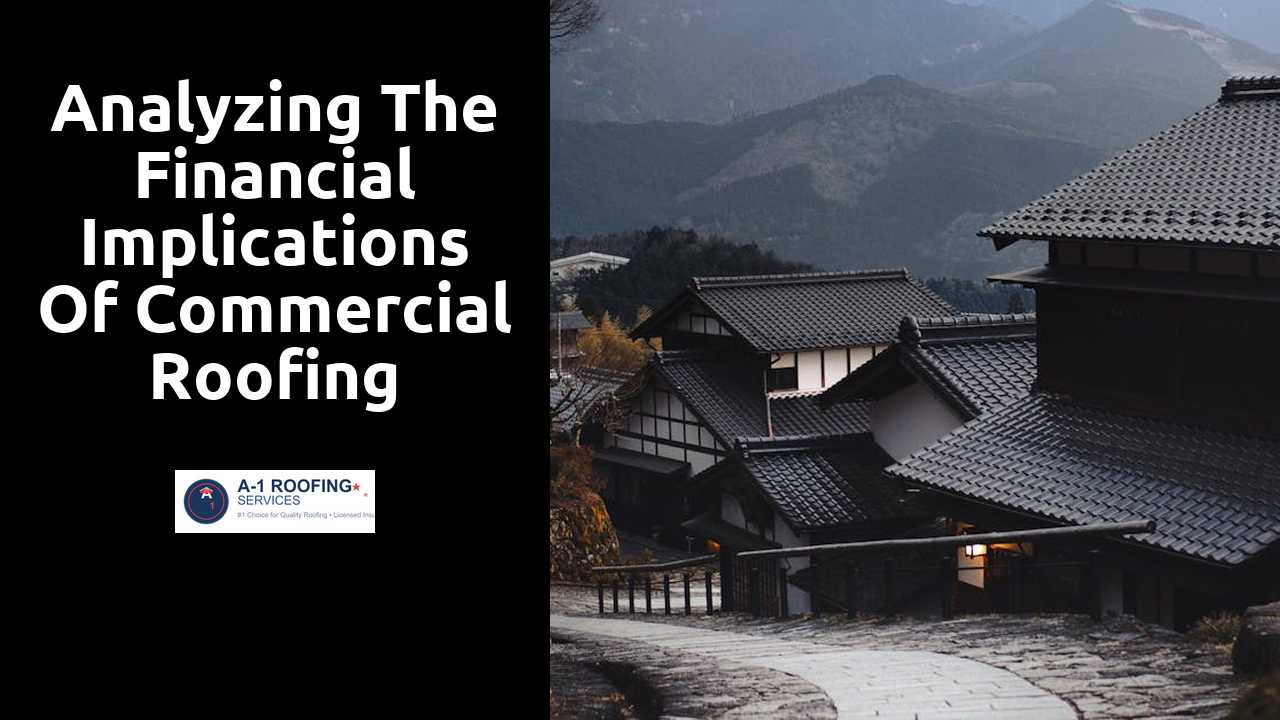
Analyzing the Financial Implications of Commercial Roofing Projects
Table Of Contents
The Role of Maintenance in Financial Planning
Maintenance is a crucial component in the financial planning for commercial roofing projects. Regular inspections and timely repairs can significantly extend the lifespan of the roofing system. Consequently, neglecting these maintenance needs often leads to costly consequences such as leaks, structural damage, and ultimately, the need for a complete roof replacement. This reality underscores the importance of allocating a portion of the budget specifically for ongoing upkeep.
Incorporating maintenance into the financial strategy also involves forecasting potential expenses based on the roof's age and material. Understanding the specific needs of the roofing system can aid in setting aside adequate funds. Establishing a routine maintenance schedule not only helps mitigate surprise costs but also plays a vital role in maintaining the property’s value. This proactive approach ultimately contributes to more stable financial management by ensuring that funds are available when unexpected issues arise.
Discover more here.
Budgeting for Ongoing Maintenance Expenses
Ongoing maintenance expenses are a critical component of financial planning for any commercial roofing project. Regular inspections and timely repairs can prevent costly issues down the line. Establishing a maintenance budget allows property owners to allocate funds appropriately, ensuring they are prepared for both routine upkeep and unforeseen repairs.
It's essential to consider various factors when estimating these expenses. The type of roofing material, the complexity of the roof design, and local climate conditions all influence maintenance needs. By analyzing these elements, businesses can develop a comprehensive budget that safeguards their investment and promotes the longevity of the roofing system.
Insurance Considerations for Roofing Projects
Navigating the complexities of insurance is crucial in any roofing project. Roofers and property owners must understand the different types of coverage available, including liability and workers' compensation. Liability insurance protects against damages that might occur during the installation or repair process. On the other hand, workers' compensation ensures that any injuries sustained by workers are covered. Both types of insurance play a vital role in mitigating financial risks associated with roofing projects.
It's essential to evaluate specific insurance requirements for each project. Local regulations may dictate certain minimum coverage levels, which can vary significantly from one jurisdiction to another. Business owners should also consider the potential for additional coverage related to severe weather events or other unforeseen circumstances. Consulting with an insurance expert who specializes in construction-related policies can help clarify the appropriate coverage needed to safeguard against financial loss during roofing endeavors.
Understanding Coverage for Roofing Work
When embarking on a commercial roofing project, understanding the specifics of insurance coverage is essential. Policies can vary significantly between providers. Coverage should include both materials and labor, protecting against various risks associated with roofing work. It's vital to ensure that the chosen policy aligns with the unique needs of the roofing project, considering factors like the building's location and type of roofing system employed.
Another critical aspect is assessing the exclusions and limitations tied to the insurance policy. Certain events, such as natural disasters, may not be covered under standard commercial roofing insurance. Additionally, coverage gaps can lead to unexpected out-of-pocket expenses, creating financial strain for businesses. Thoroughly reviewing the policy and consulting with insurance professionals can help business owners make informed decisions, securing adequate protection for their roofing investments.
Economic Factors Influencing Roofing Prices
The cost of roofing materials can fluctuate due to various economic factors. Supply chain disruptions often lead to shortages, which in turn increase prices. Market demand for specific types of roofing, such as metal or shingles, influences costs. Additionally, fluctuations in raw material prices for components like asphalt or wood can significantly impact the overall expense associated with roofing projects.
Labor costs also play a crucial role in determining the total price of roofing installation. When demand for skilled labor rises, wages may increase, affecting project budgets. Regional differences in labor availability can further contribute to price variations. Understanding these economic elements is essential for making informed decisions regarding roofing investments.
Analyzing Market Trends and Their Impact
The roofing industry is heavily influenced by fluctuations in market demand and material costs. Economic downturns often lead to decreased investment in commercial properties, which can result in a temporary dip in roofing projects. Conversely, when the economy experiences growth, property owners tend to invest more in maintenance and upgrades, driving demand for new roofing systems. This relationship underscores the need for project managers and financiers to be acutely aware of prevailing economic conditions.
Rising material costs pose another significant factor that impacts commercial roofing pricing. Global supply chain disruptions, inflationary pressures, and changes in trade policies can contribute to the volatility of roofing materials such as asphalt, metal, and membranes. Understanding these market dynamics enables stakeholders to anticipate changes in project budgets and timelines. Proactive strategies, such as securing contracts during favorable market conditions, can mitigate the financial risks associated with unpredictable price hikes.
Related Links
How Material Choices Affect Commercial Roofing ExpensesUnderstanding Labor Costs in Commercial Roofing Estimates